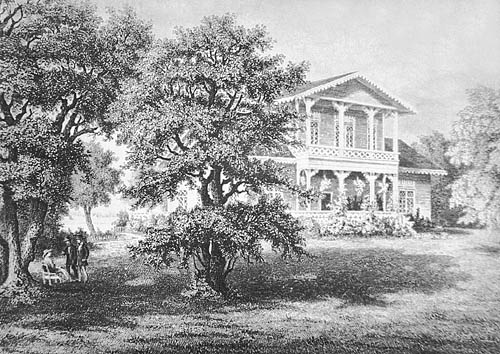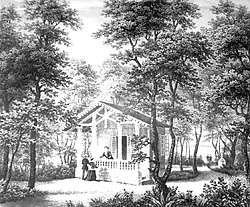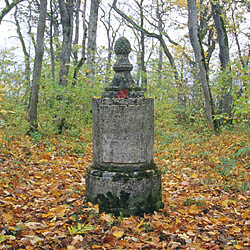The Time of the HelwigsThe cultural history of Puhtu reaches back as far back as the 18th century. This was when the lord of Virtsu (Werder), Carl Thure von Helwig built his summer residence in the beautiful forest grove of Puhtu. It is probable that by the middle of the 18th century the Helwig summerhouse, which was called the Chinese House, several smaller houses had already been built on the islet. The existing natural forest was turned into a Dutch style forest park. A hundred years later in the middle of the 19th century the lady of Werder Manor, Elizabeth von Uexküll turned Puhtu into a summer residence for the families of the manor. The sharp corners and straight edges of the forest park were dispensed with and the pruning of trees and shaping of bushes was held in disdain. Instead they endeavoured to reproduce natural groupings of plants and created crooked, meandering paths in imitation of nature. In the middle of the island a stylish three storey, eight sided timber house, known as the Family House (Familienhaus) was built. Meandering paths led from the house to the beach or to the other little houses where visitors could stay. The little summerhouses were also given names. The following names have been recorded in memoirs: Aleksander’s House, Turud’s House, Uuemõisa House and Valgu House. The two latter names indicate that other manors also had their own special house on the island where they could spend their summers. Close to the Family House was a decorative garden with standard roses, azaleas and rhododendrons Next to this was an expansive park meadow with lovely trees, among them stood the island’s broadest oak tree. At the end of one of the pathways near the western shore was a house with an extensive verandah where a member of one of the manor families or a visitor could stay. The house was called Schiller’s House because not far away stood one of the world’s first monuments to Schiller. Even though all the summerhouses were destroyed in the First World War it is still possible to see their foundations as you stroll through the forest park. In approximately 1867 Wilhelm Sigfried Stawenhagen visited Puhtu and recorded his impressions in his album ‘Baltischer Ansichten’. World Famous SculpturesCarl Thure von Helwig also adorned Puhtu garden with many stone sculptures of his own creation. The lord of the manor was affected by the sculpture and over the years he made many different memorials and monuments for his more important relatives as well as close family members. He even erected a memorial stone to himself as ‘an ardent admirer of virgin nature’. The first sculpture dates from 1797. Helwig’s collection also included a monument that he made for ‘all worthy female beauties’ (Allen liebeswürdigen weiblichen Geschönheiten der Vergangenen, Gegenwärtigen und Kommenden Zeit widmet dieses andken derer und der schönen kunstlosen Natur Verehrer Carl Thure Helwig J. 1800). The monument was placed at the Puhtu cemetery, which is located on the eastern headland at Toomenina. This cemetery, which is still in the process of being recovered, is the resting place of the creator of the Puhtu sculptures, Carl Thure von Helwig, and his family members. The pride and joy of Puhtu is no doubt the Schiller monument, which was made by Carl Thure von Helwig and once stood near the Schiller House. It is the world’s oldest surviving sculpture erected in honour of the great German poet. It is not clear who actually erected the monument, which was completed in 1813. Various sources indicate that it was one of Carl Thure von Helwig’s daughters, either Wilhelmine von Helwig or Dorothea Augusta von Rosen (nee. von Helwig), but it is most commonly considered to have been erected by Helwig’s widow, Wilhelmine von Helwig, who was well acquainted with the famous poet’s wife Charlotte von Schiller.
|
||||||||


